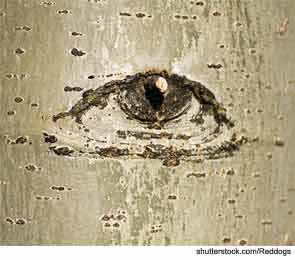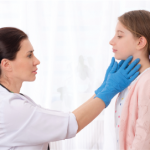
SNOWMASS, COLO.—There are many questions about Sjögren’s syndrome—including which tests are best for diagnosis and which treatments best relieve symptoms—but answers seem to be within reach. For example, what is Sjögren’s? In 2012, the ACR approved provisional criteria to more clearly define the syndrome as a triad that includes ocular dryness, oral dryness, and underlying autoimmunity, explained Alan N. Baer, MD, director of the Jerome L. Greene Sjögren’s Syndrome Center at Johns Hopkins University School of Medicine in Baltimore, during a session titled, “Key Questions in Sjögren’s Syndrome,” here at the ACR Winter Rheumatology Symposium, held January 26–February 1, 2013. Even though there is no definitive treatment, being able to establish a diagnosis is important, Dr. Baer emphasized, because this will contribute to the development of more effective treatment in the future.
Classification Criteria
There have been 12 sets of classification criteria for Sjögren’s syndrome since 1965, including the widely used 1993 European and the 2002 American–European criteria. The trouble with many of these criteria sets was their reliance on tests for individual components of the syndrome that may be outdated and not diagnostically equivalent, Dr. Baer noted. “Finally, in 2012, the ACR provided a provisional set of criteria,” he said.1 “Now we have three components, all of them objective: ocular surface staining, positive lip biopsy, and SSA/SSB antibodies.”
Per the 2012 guidelines, there is no differentiation between primary and secondary disease, and a positive diagnosis requires two out of three of these criteria:
- Positive serum anti-SSA and/or anti-SSB, or positive rheumatoid factor and antinuclear antibody (ANA) ≥1:320
- Keratoconjunctivitis sicca (i.e., dry eye syndrome) with Sjögren’s International Collaborative Clinical Alliance (SICCA) staining score ≥3, using lissamine green and fluorescein, as opposed to Rose Bengal, as the ocular stains
- Labial salivary gland tissue section exhibiting focal lymphocytic sialoadenitis with ≥1 lymphocytic aggregate per 4 mm2 (i.e., focus score ≥1)
The new criteria for classifying Sjögren’s have been validated using a rich data set collected over the past decade in the SICCA Registry, Dr. Baer said. This registry was funded by the National Institutes of Health to define new classification criteria for Sjögren’s syndrome and to collect clinical data and biospecimens from more than 3,000 participants with suspected or established Sjögren’s.
Despite having well-defined criteria, making a diagnosis is not a simple matter and requires careful consideration. For example, “there are people who may have dryness because of age-related atrophy of the glands, drug use, or other medical illnesses,” Dr. Baer said. The cutoff points for the disease criteria are not absolute. For example, “you may have a patient with a focus score of 0.8 who may well have Sjögren’s syndrome,” Dr. Baer added, “but you have to look at other features to make that determination.”
Diagnostic Testing
Testing related to establishing a diagnosis should be protocol driven, Dr. Baer said, and it is important to be rigorous in the diagnostic approach. Establishing a diagnosis is a precursor to appropriate management and frequently requires collaboration between the rheumatologist, ophthalmologist, and oral medicine specialist. “This is probably the only rheumatic disease where we routinely need collaboration for diagnosis,” Dr. Baer said.
There are questions surrounding lip biopsies, and the procedure has pros and cons. It is an important criterion for accurate disease classification, Dr. Baer said, and it is necessary if “the evidence for an underlying autoimmune process is equivocal.” The procedure is not without risks, and interpreting the test is difficult. On average, persistent lip numbness after a biopsy occurs in 3% to 5% of patients, according to reported series, Dr. Baer noted. Proper interpretation requires the harvest of four to seven individual glands, which makes it important to ensure that the biopsy technique yields adequate tissue. Misinterpretation of these biopsies is common, so Dr. Baer recommended requesting protocol-driven interpretation from the pathologist. (You can download more information about labial salivary gland biopsy at http://sicca.ucsf.edu/Labial_Salivary_Gland_Assessment.doc and http://sicca.ucsf.edu_LSG_bx_Grading_SOP. Correct interpretation of the biopsy is critical to making an accurate diagnosis, Dr. Baer noted.
Fatigue and Pain
“There is another side to this story,” Dr. Baer said. He advised attendees not to be too quick to attribute symptoms of fatigue, pain, and sicca to fibromyalgia, even if the patient lacks SSA and SSB antibodies. Fatigue is common and reported in up to 70% of Sjögren’s patients, he noted. Chronic pain also occurs in Sjögren’s, and paradoxically it has been shown to be more severe in patients who lack SSA/SSB antibodies.2 Similarly, Sjögren’s patients with a painful small fiber sensory neuropathy have a lower frequency of SSA/SSB antibodies. These observations suggest that chronic pain may be a marker of a distinct disease process that occurs independently of the traditional immunologic disease markers in Sjögren’s. It may still be autoimmune in origin, Dr. Baer added.
Therapeutic Interventions
Various symptomatic and systemic therapies may be used, but none have been shown to be disease modifying. Patients with salivary hypofunction should see their dentists on a quarterly basis for cleanings and professional fluoride treatments, Dr. Baer recommended, and the daily use of prescription fluoride toothpaste is helpful. Dry eye care involves the frequent application of artificial tears during the day and a tear gel at night. Punctal occlusion may be very helpful, and many ophthalmologists advocate the use of topical cyclosporine drops.
Neuropathic pain in Sjögren’s patients should be treated symptomatically with gabapentin or pregabalin, opioid agonists, or tricyclic or serotonin and norepinephrine reuptake inhibitors, such as nortriptyline, desipramine, duloxetine, or venlaxafine. For those with an inadequate response, the physician may try systemic treatments, such as corticosteroids, intravenous immunoglobulin (IVIg), or rituximab. Dr. Baer cited a clinical series of 19 patients with primary Sjögren’s whose neuropathy was treated with IVIg.3 The researchers noted clinical improvement in 42% of the patients and clinical stability in 52%. They concluded that IVIg may be useful in treating Sjögren’s-associated sensorimotor neuropathies or nonataxic sensory neuropathy.
“Unfortunately, the outcomes of most controlled trials of systemic immunomodulatory therapy in Sjögren’s have not been positive,” Dr. Baer said. Subjective improvement has been demonstrated with cyclosporine and alternate-day prednisone, although neither resulted in objective improvements. Neither subjective nor objective improvements have been demonstrated with azathioprine, infliximab, etanercept, interferon-gamma lozenges, or hydroxychloroquine. Despite the negative clinical trials with hydroxychloroquine, Dr. Baer noted that he still uses it because he thinks it can help, particularly with fatigue, and that is worth a six-month trial. Thalidomide therapy resulted in intolerable side effects.
With rituximab, the three placebo-controlled trials to date have had different outcome measures, with none achieving significant improvement in the primary outcome measure at the trial conclusion. However, there has been evidence of benefit either at intermediate time points or for some of the secondary measures, Dr. Baer said. “There is hope that belimumab may be beneficial in Sjögren’s,” Dr. Baer said. In a recent open label study of belimumab presented at the ACR Annual Meeting, 19 out of 30 patients reached the primary endpoint.4
In the end, establishing a positive diagnosis and treating “patients in whom the symptoms are driven by an ongoing autoimmune process” is the best way to realize the promise of biologic therapies down the road, Dr. Baer said, adding, “I am optimistic that we will see progress.”
Kimberly J. Retzlaff is a medical journalist based in Denver.
References
- Shiboski SC, Shiboski CH, Criswell LA, et al. American College of Rheumatology classification criteria for Sjögren’s syndrome: A data-driven, expert consensus approach in the Sjögren’s international collaborative clinical alliance cohort. Arthritis Care Res (Hoboken). 2012;64:475-487.
- Segal BM, Pogatchnik B, Henn L, Rudser K, Sivils KM. Pain severity and neuropathic pain symptoms in primary Sjogren’s syndrome: A comparison study of seropositive and seronegative Sjogren’s syndrome. Arthritis Care Res. 2013 Jan 17. [Epub ahead of print]
- Rist S, Sellam J, Hachulla E, et al. Experience of intravenous immunoglobulin therapy in neuropathy associated with primary Sjögren’s syndrome: A national multicentric retrospective study. Arthritis Care Res. 2011;63:1339-1344.
- Mariette X, Quartuccio L, Seror R, et al. Results of the Beliss study, the first open phase 2 study of belimumab in primary Sjogren’s syndrome. Arthritis Rheum. 2012;64(10 Suppl.):S1079.
